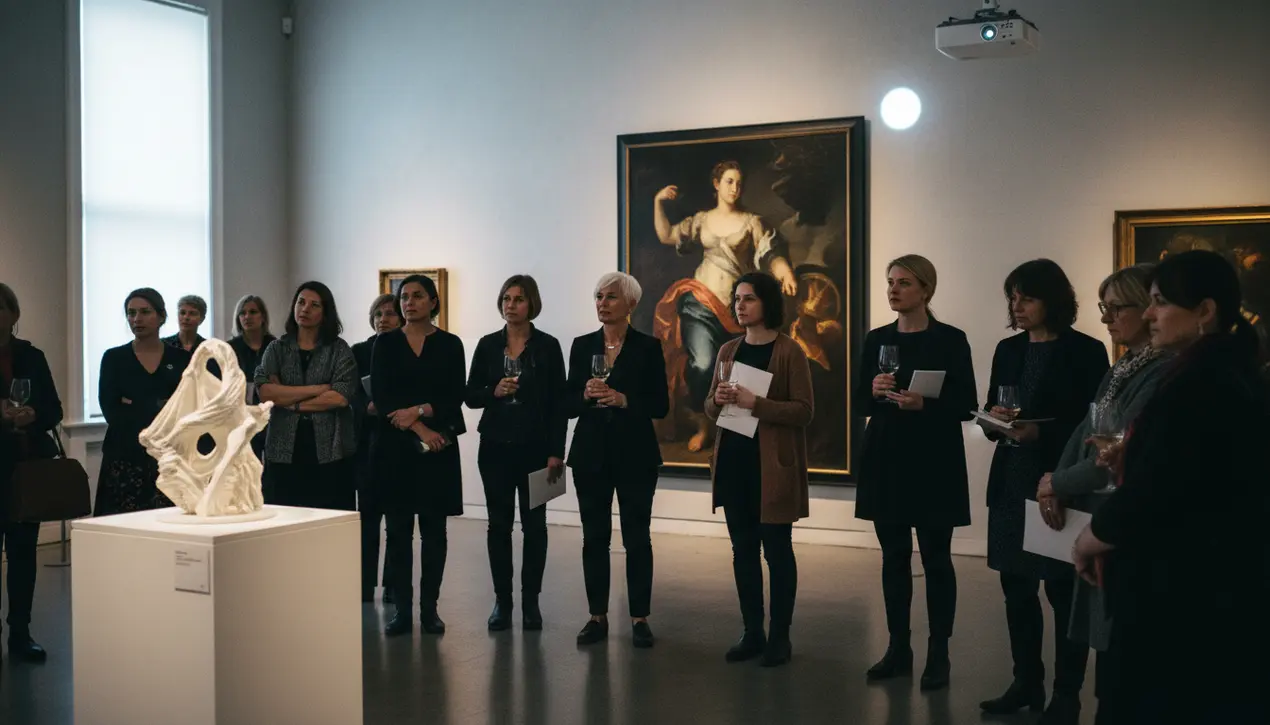
Entertainmenttheatre & artsArt Exhibitions
The Necessity of All-Woman Art Shows Today
AN
Anna Wright
2 hours ago7 min read1 comments
In a cultural moment where the very premise of gender-segregated exhibitions is being rigorously questioned, curator Alison M. Gingeras presents a formidable counter-narrative with her ambitious new project, a sweeping survey that bridges five centuries of artistic production by women.This isn't merely another show; it's a deliberate, polemical intervention into the art historical canon, forcing a confrontation with the systemic erasure that has long defined it. Gingeras, in conversation with co-host Kate Brown, champions the continued necessity of such focused platforms, arguing that the playing field remains profoundly uneven despite superficial progress.The art world, much like the political arenas I often analyze, operates on a veneer of inclusivity that masks deep-seated structural inequities. The numbers are stark and telling: major museum acquisitions and blockbuster solo exhibitions still overwhelmingly favor male artists, while auction records continue to reflect a grotesque gender valuation gap.An all-woman show, in this context, is not an act of segregation but one of radical reclamation—a temporary autonomous zone where the lineage, influence, and sheer virtuosity of women can be studied on their own terms, free from the comparative shadow of their male counterparts. This project echoes the foundational work of feminist art historians like Linda Nochlin, who in 1971 famously probed 'Why Have There Been No Great Women Artists?', exposing the institutional barriers rather than any lack of genius.Gingeras's curation builds on this legacy, creating a dialogic tapestry that connects a 16th-century Baroque painter like Artemisia Gentileschi, who fought legal and societal battles to practice her craft, with a 20th-century conceptualist like Lynda Benglis, who challenged the machismo of the New York art scene with her provocative advertisements. The show implicitly asks: how can we properly understand the present without this recovered past? Critics of such initiatives often dismiss them as passé or even counterproductive, suggesting they ghettoize the very artists they aim to elevate.Yet this perspective, often voiced from a position of entrenched privilege, ignores the pedagogical and corrective power of these gatherings. They function as both a public archive and a manifesto, demonstrating that the 'woman question' in art was never about a lack of talent, but a chronic lack of opportunity, patronage, and scholarly attention.In the same way that dedicated ministries for women's affairs in governments worldwide are not an end goal but a necessary mechanism for targeted policy and visibility, these exhibitions serve as crucial, focused institutions within the larger, slower-moving museum ecosystem. The ultimate aim, of course, is a future where the gender of the artist is as irrelevant as the color of their brush.But as Gingeras’s monumental effort makes clear, we are not there yet. To declare the mission accomplished now would be a profound historical amnesia, akin to repealing civil rights legislation under the false pretense of a post-racial society. The work of re-inscribing women into the heart of our cultural narrative is not yet complete, and until the default artist is no longer assumed to be male, the defiant, necessary space of the all-woman show must persist.
#art exhibitions
#women artists
#gender equality
#art curation
#cultural trends
#featured
Stay Informed. Act Smarter.
Get weekly highlights, major headlines, and expert insights — then put your knowledge to work in our live prediction markets.
Comments
Loading comments...
© 2025 Outpoll Service LTD. All rights reserved.